Dressed to Impress: A History
“My mother said I was dancing before I was born. She could feel my toes tapping wildly inside her for months.” – Ginger Rogers
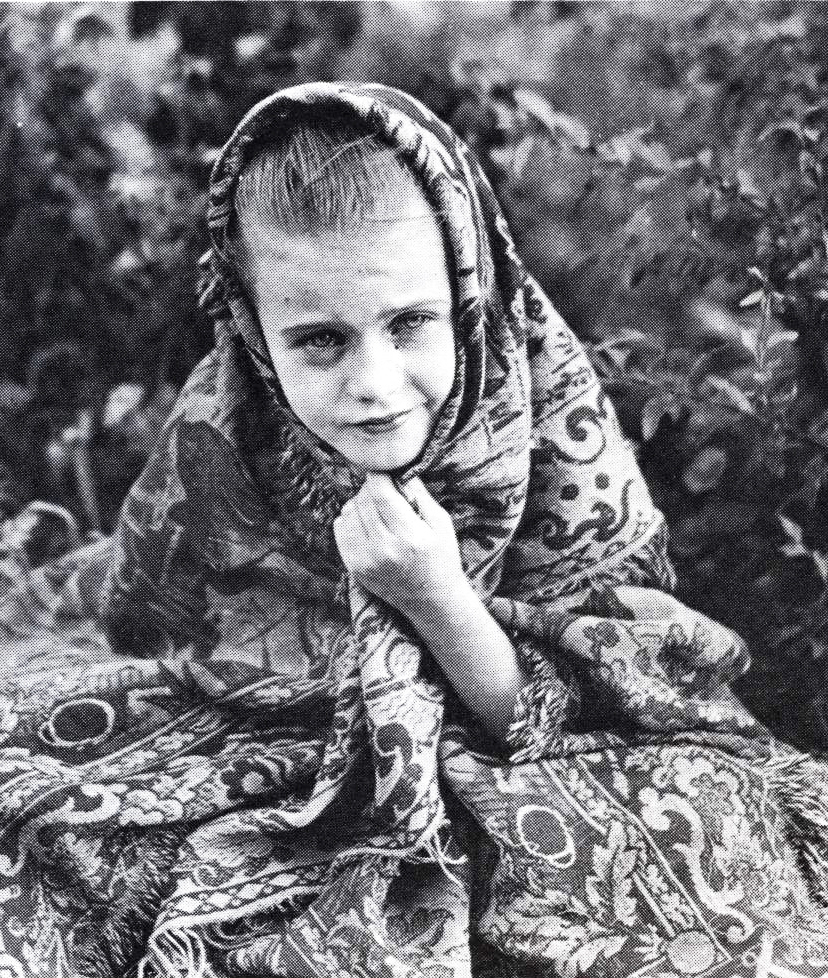
An award-winning icon of American dance and film, Ginger Rogers (1911-1995) was born in Independence, Missouri as Virginia Katherine McMath. From her place of birth at 100 Moore Street, Rogers moved to her grandparents’ home on Bellafontain Street in Kansas City, Missouri, where she lived until the age of four. During this time, Rogers made her first appearance before a movie camera. Rogers was selected to appear in a local optician’s commercial to be shown in theaters prior to a silent film screening. ‘As the grandmother fumbled for something in her parlor, a caption at the bottom of the screen said, “Virginia, have you seen Grandmother’s reading glasses?” The camera then cut to little Virginia, who tossed her golden curls, flashed a happy smile, and pointed her finger upward. Underneath, the caption read, “Yes, Grandmother, they’re on your head!” Rogers once remarked, “Can you imagine how I felt when all my family and friends went to the movie theater and saw me on the screen? I was the talk of Bellefountain Street.”IMAGE: Ginger Rogers at four years of age from Ginger Rogers: A Biography in Pictures and Story by Lela E. Rogers (Early 1970s) MHCTC. Gifts of M. Padgitt, R. Olden.
After four years, Rogers and her mother moved from Kansas City to New York, where Rogers had her first experience on stage at a legitimate theatre. The star was Jane Cowl, one of the legendary names of Broadway. In her autobiography, Rogers recalls her first experience with theatrical costume: “The costumes were spellbinding. Jane Cowl walked on stage wearing a beautiful green velvet iridescent dress and my eyes remined riveted on that gorgeous costume throughout the first act.”
From New York, Rogers and her mother moved to Texas in 1922. In 1926, Ginger Rogers became the Texas State Charleston Champion and was awarded the opportunity to perform in a touring vaudeville act called “Ginger and the Redheads.” Rogers then returned to New York with her mother where Rogers earned several signing jobs on the radio and landed her Broadway theater debut in the musical Top Speed (1929). At age 19. Rogers appeared in George and Ira Gershwin’s new Broadway musical Girl Crazy (1929), an appearance which made her an overnight star. The following year, Rogers made her first film appearances in Young Man in Manhattan, Queen High, The Sap from Syracuse, Night in a Dormitory, and Follow the Leader. Her first starring role on Broadway was in George and Ira Gershwin’s Girl Crazy (1930) where she sang the hit song “Embraceable You.”
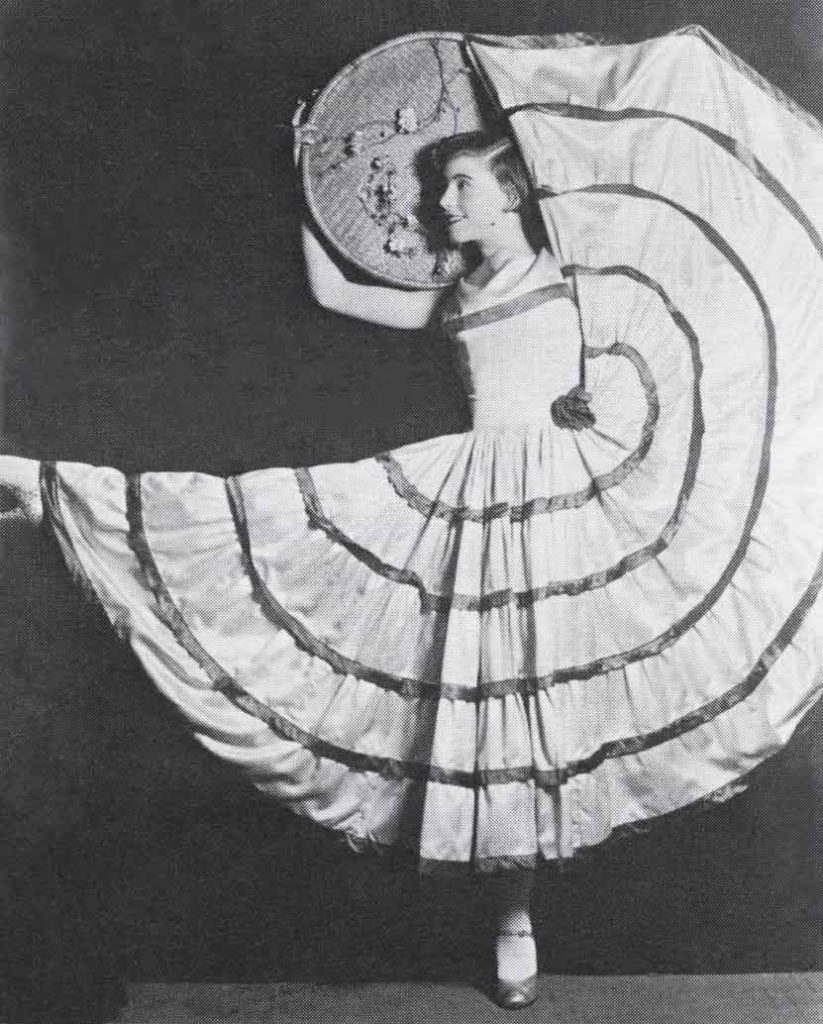
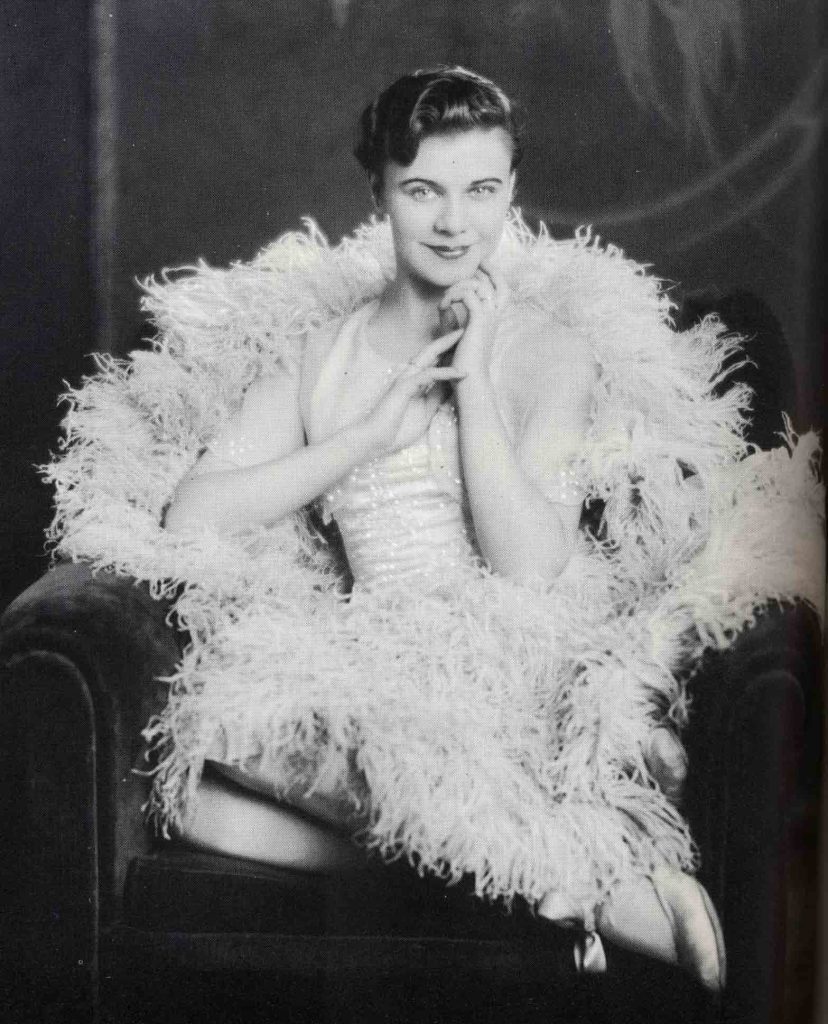

1930s King and Queen of Dance: Fred Astaire and Ginger Rogers
In 1933, at the age of 22, Rogers began her legendary partnership with fellow dancer Fred Astaire in the film Flying Down to Rio. It was an artistic partnership that would revolutionize and reimagine the Hollywood musical, reshaping the genre’s legacy for generations to come. Over nine years, Astaire and Rogers made ten films together, including The Gay Divorcee (1934), Top Hat (1935) and Swing Time (1936). Rogers appeared with Astaire for the first time on the cover of Life Magazine on August 22, 1938 dancing ‘The Yam,’ from Carefree (1938). Her last two films with Astaire included The Story of Vernon and Irene Castle (1939) and The Barkleys of Broadway (1949).
IMAGE: LIFE Magazine cover featuring Ginger Rogers and Fred Astaire dancing The Yam in Carefee. August 22, 1938. MHCTC. Gift of M. Padgitt
1940s
In the late 1930s, Rogers branched out into dramatic comedy films. Breaking from Astaire in 1939, Rogers embarked on a very lengthy and successful solo career. In 1940, Rogers won an Academy Award for Best Actress in a Leading Role for her dramatic performance in Kitty Foyle, a film based on the bestselling 1939 book Kitty Foyle by Christopher Morley. By 1941, Rogers was the highest paid woman in Hollywood, according to the New York Times.
After her success in Kitty Foyle, other feature film appearances during this period include Primrose Path (1940), Lucky Partners (1940), Tom, Dick and Harry (1941), Roxie Hart (1942), Tales of Manhattan (1942), The Major and the Minor (1942), Once Upon a Honeymoon (1942), Tender Comrade (1943), Lady in the Dark (1944), I’ll Be Seeing You (1944), Weekend at the Waldorf (1945), Heartbeat (1946), Magnificent Doll (1946), It Had to Be You (1947), and The Barkleys of Broadway (1949).
IMAGE: LIFE Magazine Cover featuring Ginger Rogers as Kitty Foyle in the film Kitty Foyle. December 9, 1940. MHCTC. Gift of M. Padgitt
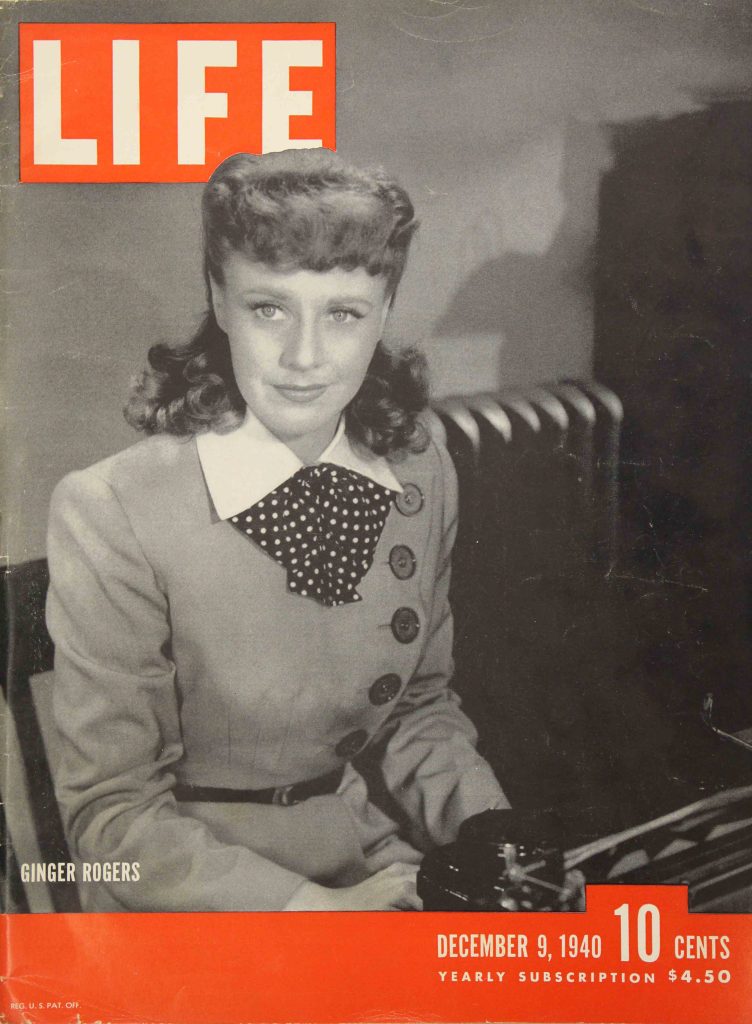
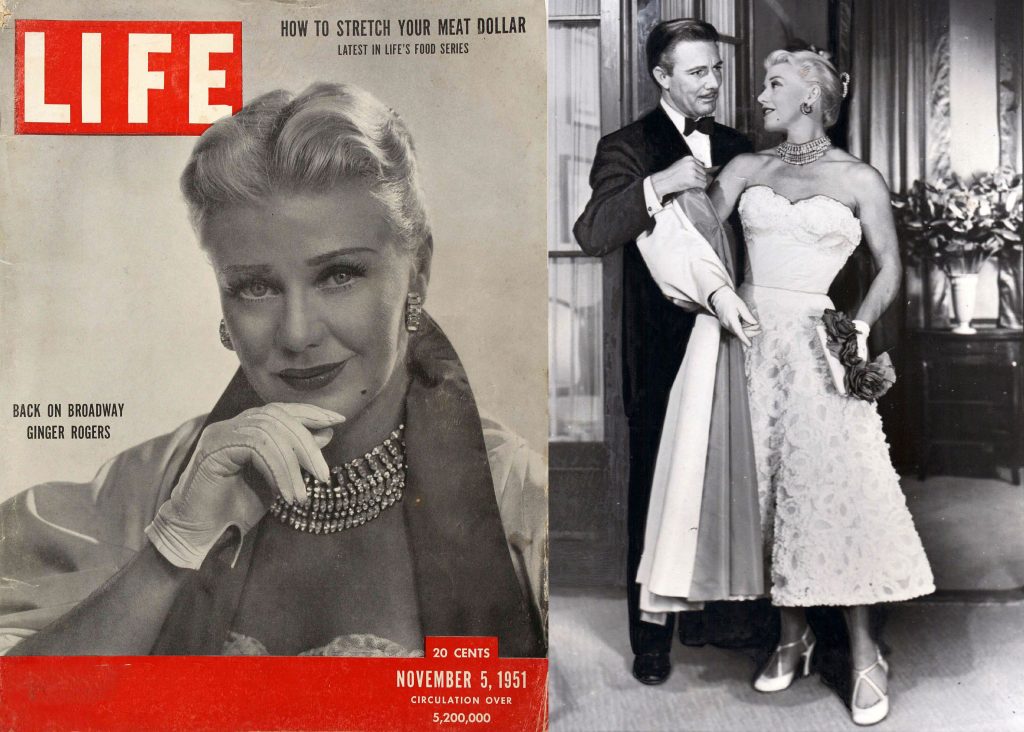
1950s: After a twenty-one-year absence from the stage, Rogers appeared in Broadway’s Love and Let Love in 1951. Rogers’ gowns for the production were provided by Columbia Pictures Head Designer Jean Louis. Rogers was pictured wearing one such gown on the cover of LIFE Magazine on November 5, 1951. IMAGE (Left): LIFE Magazine Cover featuring Ginger Rogers in Love and Let Love. November 5, 1951 (MHCTC) Gift of N. Johnston. IMAGE (Right): Ginger Rogers in Love and Let Love wearing a gown by Jean Louis (1951).

1950s
Feature film appearances for Ginger Rogers during the 1950s included Perfect Strangers (1950), Storm Warning (1950), The Groom Wore Spurs (1951), We’re Not Married (1952), Monkey Business (1952), Dreamboat (1952), Forever Female (1953), Black Widow (1954), Twist of Fate (1954), Tight Spot (1955), The First Traveling Saleslady (1956), Teenage Rebel (1956), and Oh! Men, Oh! Women (1957), followed by the stage performance The Pink Jungle in 1959.
Pictured is Rogers in a pleated gold lame gown and fur-lined cape by Oscar-winning Twentieth Century Fox contract costume designer William “Billy” Travilla for Dreamboat (1952). Nominated for his work on two movies with Marilyn Monroe – There’s No Business Like Show Business and Bus Stop – Travilla revised Rogers’ pleated gown for Monroe in Gentleman Prefer Blondes (1953), scenes of which were ultimately cut from the film. Travilla also designed for Rogers’ in ‘Black Widow’ (1954)
IMAGE: Ginger Rogers, Dreamboat, 1952 © Twentieth Century Fox Film Corp. Everett Collection, Inc
1960s
In 1961, The Ginger Rogers Show aired its first television pilot titled “A Love Affair For Three” in which Rogers played two identical twin sisters; however, the pilot was not picked up by networks. By 1965, Rogers had made 73 films, adding The Confession (1965) and her very last film, Harlow (1965), to her repertoire. Rogers also made numerous stage appearances during the 1960s, including Annie Get Your Gun (1960), Bell, Book and Candle (1961), Calamity Jane (1961), Husband and Wife (1962), The Unsinkable Molly Brown (1963), A More Perfect Union (1963), and Tovarich (1964). From 1965 to 1967, Rogers played the lead role in Broadway’s long-time smash hit Hello, Dolly! The national tour of the show stopped in over sixteen cities, with the final curtain call in Boston, Massachusetts, in 1968. From 1969 to 1970, Rogers appeared in the London theatrical production Mame which included a Command Performance for Queen Elizabeth.
IMAGE: Ginger Rogers as Dolly Gallagher Levi in Hello, Dolly! on Broadway, 1965-67. MHCTC. Gift of R. Olden.

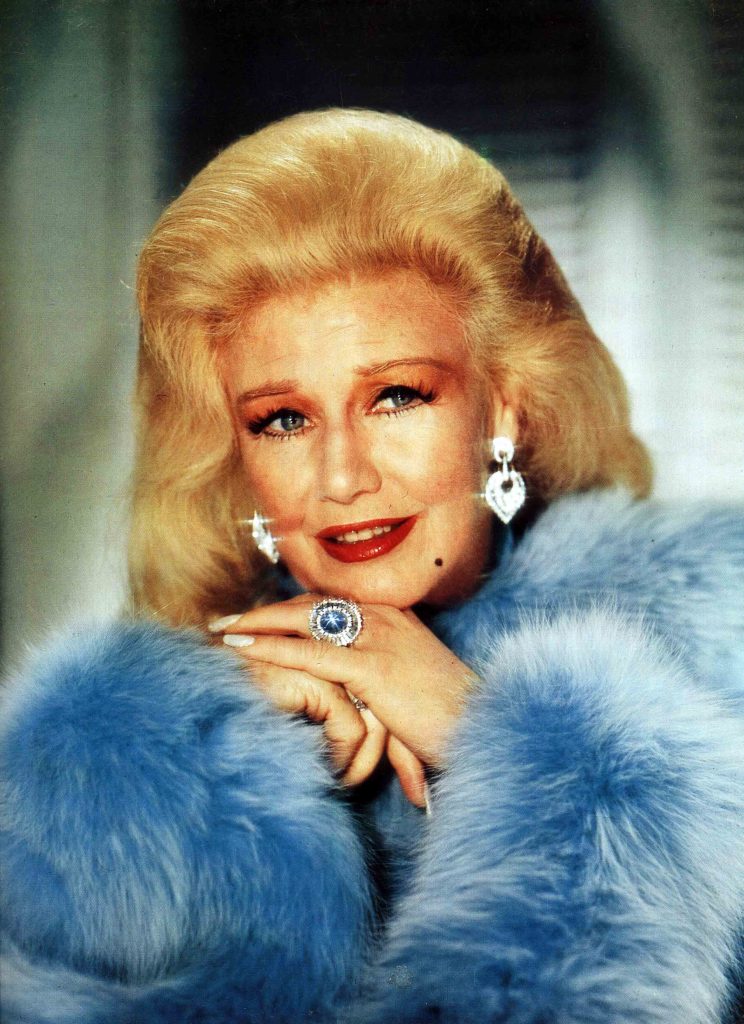
1970s
Ginger Rogers continued her success on stage into the 1970s with Coco (1971), No, No, Nanette (1974), and 40 Carats (1974-75). In the summer of 1975, Rogers made the decision that “instead of doing somebody else’s material, dialogue, and songs, [she] should do those musical numbers associated with [her] own career.” Her nightclub revue, The Ginger Rogers Show, was born that same year for which she asked award–winning Hollywood designer Jean Louis to design costumes. The revue toured nationally as well as internationally to Canada, Australia, Mexico, Argentina, and England from 1975 to 1979.
IMAGE: Ginger Rogers from her nightclub revue The Ginger Rogers Show (1975-79).

1980s
In 1980 at the age of 69, Rogers performed with the legendary Rockettes in Rockette Spectacular at Radio City Music Hall.
Stage appearances for Ginger Rogers in the 1980s include Anything Goes (1980), Miss Moffat (1983) and her very last public performance in Charley’s Aunt in 1984. In 1985, Rogers fulfilled a long-standing wish to direct when she directed the musical Babes in Arms off-Broadway in Tarrytown, New York, at 74 years old.
IMAGE: Ginger Rogers performs in Rockette Spectacular.
Women’s Wear Daily described Rogers as “a fashion independent who shuns the avant garde; petite, peppery Ginger Rogers treats fashion as just another type of showcase. The seasoned star … knows what’s best for her down to the last gesture, angle and thread … to help create an aura of glamour.” (Dresses: Fashion a Showcase for Ginger Rogers. Women’s Wear Daily, New York (Vol 103, Iss. 18, (July 27, 1961): 24.) Ginger Rogers, through her costume and performances, continues to be viewed with a unique sense of nostalgia, awe and joy best summarized by Will Friedwald who said,
“… an American favorite – as American as apple pie – because Americans can identify themselves with her… She is not uncomfortably beautiful. She is just beautiful enough. She is not an affront to other women. She gives them hope that they can be like her. She is a living affirmation of the holiest American Legend: the success story.”
Filmography and Autobiography
Ginger Rogers’ filmography from 1940 to 1984 includes 31 film and radio performances, 19 stage appearances, innumerable magazine features, and a jazz album. Rogers starred in a variety of comedies and dramas with such leading men as Cary Grant, Henry Fonda and Ronald Reagan, appearing on television with Perry Como, Bob Hope, Pat Boone, Steve Allen, Dean Martin, Lucille Ball, June Allyson, and more. Her autobiography titled Ginger Rogers: My Story was published in 1991. Rogers maintained one of the longest successful careers in Hollywood spanning over six decades from the 1920s to 1984.
IMAGE: Book cover, Ginger: My Story by Ginger Rogers (1991). MHCTC. Gift of M. Padgitt.
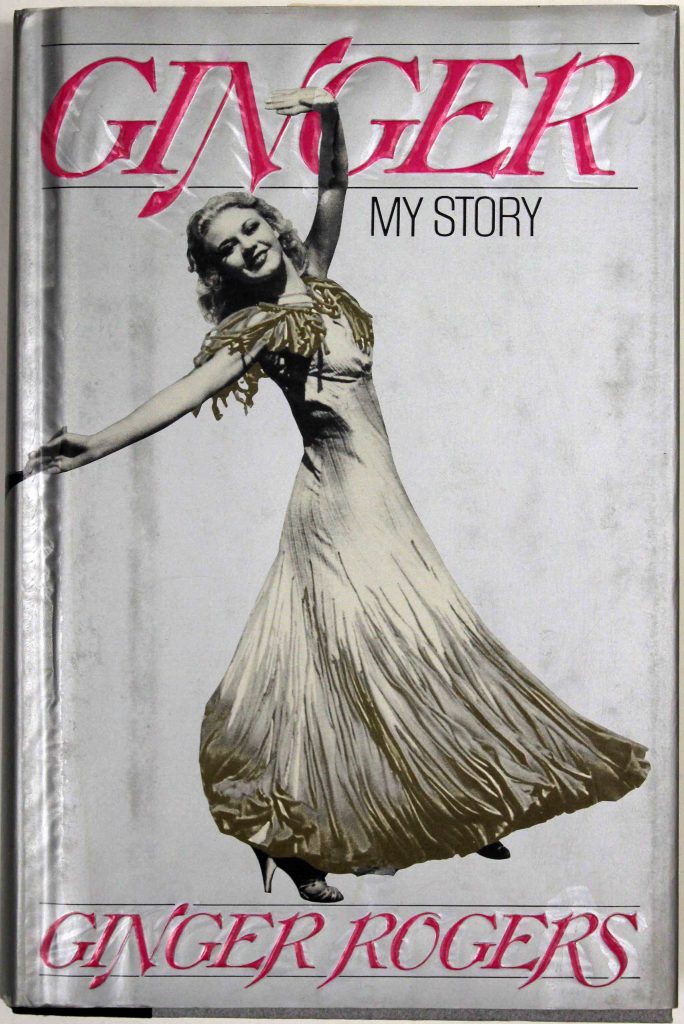
“She is not thought of as someone who survived or kept her career going after great setbacks. Instead, she is a star who never had to make a comeback because she never left the limelight.”
– Jeanine Basinger, A Woman’s View: How Hollywood Spoke to Women, 1930-1960, 1993